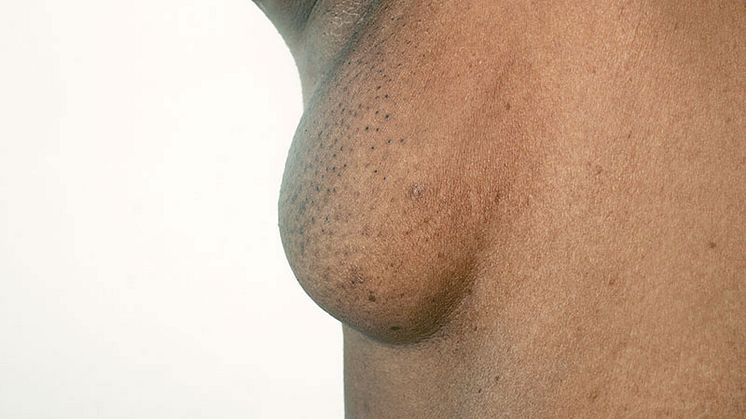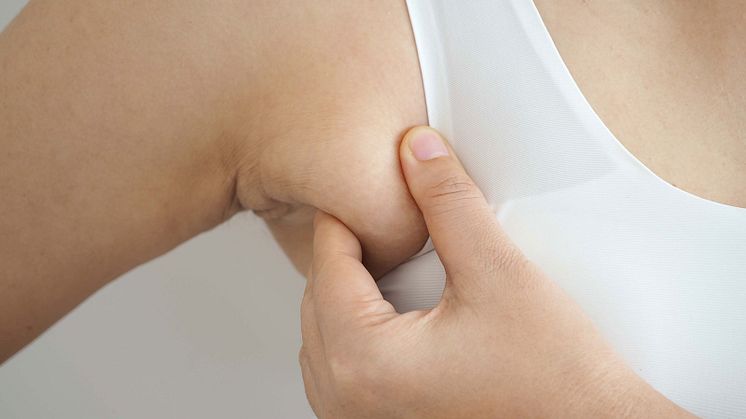
Blog post -
Is Accessory Breast Tissue Harmful? All You Need To Know
So what is axillary breast tissue? Another name for the condition is accessory breasts. It’s often mistaken, to the uninformed, to be armpit which is also a form of axillary fat.
What is accessory breast tissue, and is it common?
The accessory breast is breast tissue found outside of the breast area. It is defined as residual (breast) tissue that persists from normal embryologic development. It may be divided into Polythelia and Polymastia.
Polythelia is the presence of a third or multiple nipples. They appear along the milk line, which arches from the armpits to the groin on both sides. On the other hand, polymastia denotes the presence of additional mammary glands and is a much rarer condition.
Accessory breast tissues can also appear outside the milk lines in areas like the posterior neck, chest, middle back, buttock, vulva, flank, hip, shoulder, upper extremities and posterior and lateral thigh. There have also been cases where it appears on the face. Individuals with the condition may be unaware that they do, although large ones can cause inflammation and irritation.
The common cause is hormonal changes, and these tissues may increase in size during pregnancy and lactation. The condition must be properly diagnosed by a qualified doctor because it can be mistaken or misdiagnosed as other conditions. As such, the wrong treatment may be dispensed, which could worsen the situation or even cause new issues. Surgical intervention, if called for, must entail what is necessary and appropriate to address the issue effectively.
Around SIX percent of women may suffer from this condition, and apparently, Japan has the highest number of reported incidents. Accessory breast tissue is also regarded as a common congenital condition.
Grades of Accessory Breast Tissue

Accessory breast tissue can be divided into EIGHT grades
Grade I - Consists of a complete breast with a nipple, areola and glandular tissue.
Grade II - Consists of glandular tissue and nipple without an areola.
Grade III - Consists of glandular tissue and areola without a nipple.
Grade IV - Consists of glandular tissue.
GradeV - Consists of only nipple and areola without glandular tissue.
Grade VI - Consists of only the nipple.
GradeVII - Consists of only the areola.
Grade VIII - Consists of only hair.
Of the above, Grade IV is the most common.
Is Accessory Breast Tissue harmful?
There is still much debate on the potential harm associated with the condition. Some research has suggested an increase in the incidence of cancer related to the issue. While other studies have suggested otherwise, there is no evidence. However, physical discomfort and swelling have been reported in some cases.
What are the symptoms of accessory breast tissue?
Swelling and tenderness in the affected region is a common experience, and as the condition is susceptible to hormonal changes, these may be aggravated, especially during puberty and pregnancy.

They may appear like lumps or swelling, and in the case of extra nipples, they may appear as dimples or moles, leading to a wrong diagnosis by an untrained and inexperienced doctor.
What are the effects of Accessory Breast Tissue?
Aside from the potential pain, discomfort and even milk secretion in some cases, an individual is also likely to experience low self-confidence and self-esteem due to the condition. The size of the accessory breast tissue may also cause inflammation and irritation, making wearing bras and certain clothing an (uncomfortable) ordeal.
Can Accessory Breast Tissue be removed?
It is possible to remove accessory breast tissue, and the recommended option is via surgical excision. This method helps relieve the physical discomfort often associated with a large volume of accessory tissue. Neither armpit fat nor accessory breast tissue concerns can be resolved by non-invasive treatments or methods.
Liposuction may be recommended with excision for cases involving accessory breast tissue and armpit fat. The doctor must be accredited by the Ministry of Health Singapore, where liposuction is involved.
What Do You Need To Know About Accessory Breast Tissue Removal And Armpit Fat Liposuction In Singapore?


The first step is to get it diagnosed properly, eliminating any possibility of an inappropriate or wrong treatment being prescribed.
Accessory axillary breast tissue is often mistakenly assumed to be armpit fat. Armpit fat is a common issue and is relatively straightforward to treat. It is caused by excess weight, hormonal changes and/or genetics.
Accessory axillary breast tissue, on the other hand, can involve pain and discomfort for an affected individual. A doctor, therefore, has to be more aware of his approach, in particular, when it comes to suggesting the appropriate treatment.
At Amaris B. Clinic, Dr Ivan Puah tailors armpit fat removal surgery and accessory breast tissue removal procedures according to the individual’s needs. As each patient is unique, the ‘cookie-cutter’ approach is not recommended. Dr Puah also believes that when it comes to body sculpting, it is a 70/30 approach, to mean 70% art and 30% science.
Dr Ivan Puah’s understanding of this need, coupled with his experience, led to the development of the MDC-Sculpt®️ Lipo technique. In summary, the technique can target and remove fat, sculpt the body and stimulate collagen production. There is also minimal scarring as strategic incision sites will be selected. Fat is permanently eliminated, and axillary accessory breast tissues are removed via excision, so that patients can appreciate the visible results and changes.

